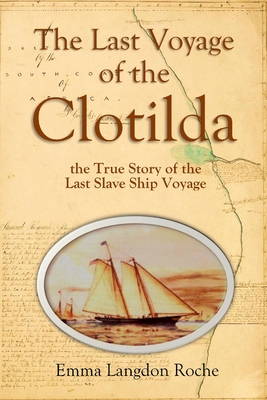
The Last Voyage of the Clotilda, the True Story of the Last Slave Ship Voyage (1914)
Description
"Roche published the first account of the last slave ship to enter the United States....She was the artist/writer daughter of a prominent white family here. She spent a great deal of time interviewing the people who had been illegally brought into South Alabama to be the slaves of several local men." -Michael Thomason, PhD, Lagniappe Weekly In 1914 Emma Langdon Roche (1878-1945) published the book "Historic Sketches of the South," which book included several chapters on the last voyage of the schooner Clotilda which was the last known U.S. slave ship to bring captives from Africa to the United States. It is these chapters on the Clotilda, comprising about 25 pages, which have been republished here for the convenience of the interested reader. In July 1860, the schooner Clotilda, under the command of Captain William Foster and carrying a cargo of 110 enslaved Africans, arrived in Mobile Bay. Captain Foster was working for Timothy Meaher, a wealthy Mobile shipyard owner and steamboat captain, who had built Clotilda in 1856 for the lumber trade. Meaher was said to have wagered some "Northern gentlemen" from New England, who likely provided the financing for the illegal venture, that he could successfully smuggle slaves into the US despite the 1807 Act Prohibiting Importation of Slaves. Regarding the slaves comprising the cargo, Roche notes: "THE slaves who constituted the Clotilde's cargo and who have become historic by being the last brought into the United States were captured by Dahomey's warriors and Amazons on one of their cruel excursions. For many years the tribe of Dahomey had been a scourge to the weaker and more peaceable tribes whose domains lay near the Gold Coast or in the interior away from the coast of Guinea.

